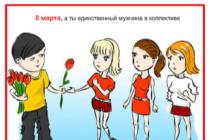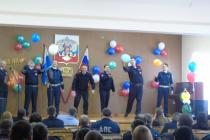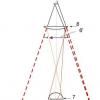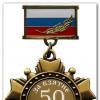Modern trends in education require that education in schools be aimed at practical activities, development and implementation by students of their own projects and contributed to the achievement of various learning outcomes.
In order to meet these requirements, the Unique Schools project was created in the Perm Territory. Within the framework of this project, innovative schools are being opened, in which educational programs involve interaction with various enterprises, universities, institutions of secondary vocational education.
As an example, we can imagine school No. 129 of an engineering and technological orientation, or "Technoschool". Education in which will increase the interest of students in engineering and technical specialties and help grow future specialists for enterprises participating in the innovative cluster of rocket engine building. The task of school No. 32 is organization educational process in the "full day" mode, the combination of sports and educational processes.
Along with new unique schools, "Technoschool", "IT School", cooperation between schools and partner enterprises interested in the development of technological education and engineering creativity of schoolchildren can be realized on the basis of youth innovative creativity centers (TsMIT).
In this regard, on the basis of MAOU "Secondary School No. 37", a project was developed to create a CMIT. Based on the Regulations, CMIT carries out its activities together with students, subject teachers, class teachers, social partners, clubs and circles of an educational institution, in contact with others educational institutions focused on innovative creative activity.
The main goals of the CMIT:
Support for innovative creativity of children and youth, including in order to increase the level of professional readiness;
Formation of curiosity and creative thinking; stimulation of the generation of innovative ideas and developments; children's initiatives in various fields life; increasing interest in research in the field of new technologies;
Ensuring the implementation of the rights to the participation of schoolchildren in school management, increasing the prestige of education; instilling pride in educational institution, future profession;
Expanding and strengthening the traditions of school life;
Formation of patriotism, civil and moral position, physical and spiritual development;
Health promotion, formation of a common culture and healthy lifestyle the lives of adolescents and the promotion of a healthy lifestyle and the prevention of asocial phenomena in the school environment;
Promoting the development of adolescents' social maturity, independence, ability for self-organization and self-development.
To achieve the goals set, it is necessary to implement the following tasks:
Providing opportunities for children and youth to realize their interests and opportunities, including in scientific and technical creativity;
Informing schoolchildren about new technologies, development of scientific and technical activities; achievements modern science and technology;
Organization of career guidance activities;
Creation of conditions for development and implementation creative projects students aimed at creating innovative products;
Organization of creative workshops, clubs.
Key activities of the CMIT:
1) Organization of the activities of clubs, creative associations, innovative practices aimed at organizing leisure activities that meet the needs of students and youth;
2) Organization of mass youth cultural events for young people, involvement in the competitive movement;
3) Organization of summer and year-round recreation for teenagers and youth;
4) Promoting the development of student entrepreneurship.
For teachers of educational institutions of the Perm Territory with the assistance of the scientific consultant Metlyakova Lyubov Anatolyevna, Ph.D., Associate Professor of the Department of Social Pedagogy, PSGPU from 10/20/2016 to 11/03/2016. the educational module of the program of additional professional education was developed and implemented: "Effective practices of professional self-determination of students within the framework of the center of youth innovative creativity".
The purpose of the seminar was to create conditions for the exchange of experience and familiarization with the technologies of professional self-determination of students through the organization of creative activities (using the example of the activities of the CMIT). The seminar consisted of a theoretical part, which consisted in the presentation modern approaches to questions of vocational guidance, including regulatory and legal materials; organizational and pedagogical conditions for supporting professional self-determination. The second part of the workshop was practical. At the master classes, teachers of school No. 37 demonstrated methods of working with students in specialized groups that ensure the success of students in the study of individual subjects: geography, social studies, chemistry, formation learning motivation, popularization of scientific, educational and creative activities.
In addition to master classes, open lessons: biology in grade 9, technology in grade 5. The content of the lessons, technological methods were filled with new meanings that meet the requirements of the modern lesson. The lessons evoked a positive emotional response from the students, the acquired knowledge and skills are applicable in the daily life of children. The lessons corresponded to the topic of the seminar, contributed to the improvement of the professional competence of teachers educational institutions, institutions additional education children in the formation of professional self-determination by means of a lesson.
The main interesting project lines of the CMIT activity are:
- Intellectual direction: LEU, olympiads, scientific and industrial complex, Week of sciences.
- Creative direction: competitive movement (competitions "Young inventor", "Young engineer" and "Vernissage of family heirlooms and inventions");
- Project activity of school clubs (club "From idea to result!", Club of creative games, etc.)
- Civil-patriotic line - the work of the clubs "Ecologist", "Local historian".
- Information and communication line - activities of clubs computer games, "With a computer for YOU", school junkors.
- Network cooperation line and social partnership.
During the reporting period, Information Support activities of the Center for Youth Innovative Creativity and the results of the work of the CIO. More than 20 articles, notes were published on the school website. Every month, the Peremena-Perm newspaper in Perm publishes articles about innovation activities schools. Information reaches the participants of education also through the school local network, films and presentations prepared by students are broadcast in the assembly hall and school lobby.
CMIT focuses on combining the interests of science and industry, networking with educational institutions; is ready to provide services to the population by organizing new forms of educational interaction; develops social projects and puts them into practice.
In conclusion, I would like to note that the implementation of the innovative project "Creation of the Center for Youth Innovative Creativity (CIT) as a model for the development of technological education for schoolchildren" contributed to the search and implementation of effective practices that contribute to the development of creative initiatives and positively influence the professional self-determination of students. Relations with the public, science and social partners were expanded and strengthened. The professional competence of teachers in the organization of design and research activities of students, systematization and presentation of results has increased. One of the main ideas of the CMIT remains the implementation of children's and youth initiatives, the creation of conditions for the self-realization of students, teachers and parents of students, including in order to increase the level of professional readiness of students. At the same time, the innovative project involves further development and implementation of new individual areas.
About creativity in real business write and talk now quite a lot. However, the emphasis, as a rule, is on the creative side of things. The place of creativity in the activities of an organization (company) remains, as it were, behind the scenes. At the same time, this aspect is not only interesting, but also useful. If we bring together a few creative people, then we will get a lot of interesting, but completely useless ideas. “Ideas, even the most wonderful ones, are useless if they are not used. … Until they are put into practice, they will remain in obscurity.” As you can see, the idea is not everything. In this regard, consider the following concepts modern organization as "creativity", "innovation" and "entrepreneurship" and try to link them together.
1. Entrepreneur (entrepreneur) - citizens and their associations whose activities are aimed at systematic obtaining income from the use of property, the sale of goods, the performance of work or the provision of services.
2. Innovation (innovation) - targeted introduction of qualitative changes that transform real social practice.
3. Creativity (creativity) - the ability to come up with new, non-trivial and at the same time reasonable solutions.
Let's take a closer look at each of these terms.
Usually the word Entrepreneur is associated with the owner. This is natural, it is the entrepreneur-owner who has the decisive rights to all actions related to the business. However, within the organization (company) internal entrepreneurship (intrapreneurship) can take place. Intrapreneurship is the activity of the employees of the enterprise, based on their initiative and activity, carried out within the organization certain types activities in order to increase the efficiency of the enterprise, maximize profits and most fully meet the needs of active employees of the enterprise (intrapreneurs). Opportunity domestic entrepreneurship allows us to consider managers of various levels in organizations (companies) as business entities Barancheev, V.P. Innovation management/ V.P. Barancheev. - M.: Finstatinform, 2010. - S. 121 ..
Innovation (innovation) can be considered on various levels. Transformational or revolutionary innovations that lead to irreversible changes in the existing order of things on a global scale. Meaningful innovations causing big, but not cardinal changes, and, finally, evolutionary - ongoing changes that occur regularly. It is the latest innovations that are characteristic of the activities of the organization (company). It is important that innovations are differentiated into socio-economic, managerial-organizational and purely technological types. In this regard, the most important areas of innovation in an organization (company) include:
Innovation of goods and services;
Innovation in production technology;
Innovations in organization and methods of work;
Innovations in the ways of delivering goods or services to the customer;
Innovations in the means of informing the client about the product;
Innovations in the ways of managing relationships within the organization Kokurin, D.I. Innovative activity / D.I. Kokurin. - M.: Exam, 2010. - S. 169 ..
Rice. 1.
Creation. In 1983, the component theory of creativity was formulated, which is recognized as one of the main theories of creativity of individuals and organizations. The theory has undergone significant evolution since then, but the basic components have remained the same.
Creativity requires the fusion of four components:
1) intrinsic motivation;
2) a high level of industry knowledge;
3) mastery in the use of creative thinking;
4) an environment with a high content of supports for creativity Grachev, M.V. Innovation management / M.V. Grachev. - M.: Delo, 2010. - S. 89 ..
The concepts of creativity, innovation and entrepreneurship are interrelated. An expression linking these concepts may sound like this. An entrepreneur, using creativity as a resource, innovates in order to increase efficiency. The process, even if it is creative, does not matter for the sake of the process.
The Center for Youth Innovation Creativity (TsMIT) is an open space where children and teenagers learn to turn their engineering ideas into functional prototypes. the main task such sites - to train young people for free in new technologies: robotics, digital manufacturing, modeling, prototyping and working on machine tools.
The Russian TsMIT is an analogue of the well-known international project FabLab, which was initiated by the Massachusetts Institute of Technology (MIT). The project grew out of MIT professor Neil Gershenfeld's university course "How to Make (Almost) Anything".
In Russia, the project to create the TsMIT was launched in 2012 at the initiative of the public organization Young Innovative Russia. Its goal is to provide children and young people with free access to high-tech equipment to acquire skills that will be in demand in the near future.
How to open CMIT
The opening of the CMIT can be compared with the opening of an advanced training center or a creative club: you need to register a company, draw up a charter, rent a room, purchase equipment and ... go ahead! A business plan can be quite simple. There are several main sources of income:
- execution of small orders, for example, prototyping, 3D printing or automation;
- holding an engineering school for children and adults;
- mini production series of products.
Cost items are also easy to predict:
- rent;
- purchase of equipment, software and materials;
- employee salaries;
- taxes and a number of fixed costs.
The steps you need to take to open WMIT are the same as those required to start any offline business. Another question, if we are talking on the creation of such a center with state support.
The project to create the CMIT was supported under the State Support Program for Small and Medium Enterprises of the Ministry of Economic Development of Russia. According to this document, small businesses can apply for subsidies federal budget in the amount of ₽7 million.
Who gives subsidies
A subsidy for the implementation of the project can be obtained within the framework of the competition "Support for the Centers of Youth Innovative Creativity (CIT)". Applications for participation in the competition are accepted by the Fund for Assistance to the Development of Small Forms of Enterprises in the Scientific and Technical Sphere (Innovation Assistance Fund, or "Bortnik Fund" - editor's note).
Who can apply for a subsidy
You may be eligible for a subsidy legal entities that meet the criteria for being classified as a small business in accordance with Federal Law No. 209-FZ:
- the amount of revenue for the previous year, excluding VAT, does not exceed ₽800 million;
- the average number of employees is not more than 100 people;
- share of third parties in authorized capital companies no more than 49%.
The company must be a member of the program state support SME of the Ministry of Economic Development of Russia for the creation or maintenance of the CMIT, or to act in the interests of the already established CMIT, and also have OKVED 72.1 "Scientific research and development in the field of natural and technical sciences", or OKVED code 73.1.
The proposed project must not have other budgetary sources of funding during the entire period of project implementation using a grant and any other pending relationship with the Innovation Promotion Fund. The project participants themselves individuals should also not participate in other projects funded by the Innovation Assistance Fund.
What to spend money on
Subsidies from the federal budget can only be used for approved areas of activity:
- purchase of high-tech equipment (with a set of spare parts and Supplies);
- acquisition of electronic computing equipment (equipment for information processing);
- acquisition of software, peripheral devices, copiers;
- providing communication;
- financial support for educational projects and activities to involve children and youth in innovative activities.
Requirements for centers
There are a number of requirements that the CMIT must meet:
- the presence of own or rented premises with an area of \u200b\u200bno more than 120 square meters. m for equipment placement;
- availability of a standard set of equipment;
- the presence in the state of at least two specialists who can work with this equipment;
- availability of specialists with experience in working with children;
- providing open access to equipment;
- availability of Internet connection and Internet portal.
In addition, the organizers of the WIC must ensure its activities for 10 years from the date of its creation.
Standard set of equipment
The list of standard equipment of the center is small: 3D printer and scanner, milling machine and laser cutting machine, cutting plotter. The center also needs office equipment: computers or laptops, printers, scanners, telephones.
Opinions
Polina Dyatlova, head of Fab Lab "Polytech" (Russia, St. Petersburg):
– In 2011, the Polytechnic University sent me and my colleagues for an internship at Fablab at the University of Catalonia (Barcelona, Spain). At about the same time, a support program for the Center for International Information and Information Technologies from the Ministry of Economic Development of Russia was opened in Russia. Our team set about organizing such a center at the Polytechnic University and received the first grant from the Innovation Promotion Fund, the Ministry of Economic Development and the Government of St. Petersburg.
To popularize engineering creativity among young people, we organize engineering schools, science weeks, intensive courses for applicants. Basically, we receive financial support from the Polytechnic University, as well as in the form of grants from foundations and development institutions, but there are also commercial orders. From my own experience, I can say that the main thing is not to be afraid of anything, to go forward, to test in practice the emerging design and organizational hypotheses.
The head of the Fablab "Polytech" Polina Dyatlova at the Fabacacademy 2016 awards
Grzegosh Belika, Vice-President of FabLab "Lodz" (Poland, Lodz):
– Our formula for existence is to remain independent of state grants and subsidies. Our history of fundraising is quite complex: 90% of the funds received over the past three years were collected from individual work with private foundations. We also involve businesses in cooperation, conduct crowdfunding campaigns…
The target audience of our center is enthusiasts of the DIY (do it yourself) movement. We provide a creative and innovative space (including equipment) for development and self-realization. In addition, we conduct courses on 3D modeling, programming, fashion design and even welding.

Fablab Lodz 3D printer for ZSP 20
CMIT Russia
According to RVC, today there are 226 CMITs in 32 regions in the country. In the most complete list, which is presented on the website of the Community of the CMIT and fab labs of Russia, there are 154 organizations. According to research conducted by Docsourcing, 65 of the centers on this list have an up-to-date website or page on social networks, which provides minimal information about the organization, including address and contacts.
Of these 65, 41 ITCs are completely non-profit, that is, they do not receive any profit and operate at the expense of grants and sponsors. The commercial model of existence was chosen by 24 organizations. Most of them conduct paid courses and trainings, a smaller part provides services: manufacturing small batches of products, renting equipment, space, etc.
Below is a list of the 65 most active Russian WICs:
UPD: five more CMITs are listed, now there are 70 of them
| Name |
City |
Website |
Specialization |
|
| Arkhangelsk Center for Innovative Youth Creativity |
laser cutting, milling CNC, 3D scanning |
|||
| CMIT "LIRA" |
3D printing, 3D printers, robotics, modeling |
|||
| Fablab "Interkot" |
Robotics |
|||
| Fablab "Eureka" |
Programming, electronics, robotics, biomedicine |
|||
| CMIT "Creative laboratory "Genesis" | Dmitrov | https://www.facebook.com/labgenesis.dm/ | 3D modeling, electronics, robotics and remote control systems | |
| CMIT "Progress" | Dmitrovgrad | tsmitprogress.rf | Radio engineering and electronics Arduino, 3D printing, 3D scanning, laser cutting and engraving, milling, plotter cutting, robotics, unmanned aircrafts | |
| CMIT "Polytech" |
Robotics, electronics, web programming, C++1, laser cutting and engraving |
|||
| Robotics Laboratory "Cosmoport" |
Robotics |
|||
| CMIT "Zhukovsky" |
3D printers, laser machines, milling machines |
|||
| CMIT "Youth" |
3D scanning, 3D printing, 3D modeling, laser engraving |
|||
| CMIT "Innovation Agency" |
||||
| CMIT "Design Factory" |
3D scanning, 3D modeling, 3D printing |
|||
| CMIT "Baikal" |
3D printers, electronics and robotics |
|||
| CMIT "Digital House" |
Robotics, engineering, prototyping, animation, sound engineering, painting, journalism |
|||
| Center for Youth Innovative Creativity |
3D scanning, 3D printing |
|||
| CMIT "Composite" |
Robotics |
|||
| CMIT "Fablab Angar" | Krasnoyarsk | http://fablab24.ru/ | 3D printing, laser cutting, engraving, milling machine, cutting plotter, band saw, screw-cutting lathe | |
| CMIT of the Republic of Tyva |
Robotics |
|||
| CMIT "Innovator" |
Invention training, streamlining, 3D modeling, prototyping, programming, robotics, laser cutting |
|||
| Children's University of Moscow State Pedagogical University |
Robotics, electrical engineering |
|||
| Production base "3D Ideas" |
3D modeling, 3D scanning, 3D printing |
|||
| CMIT "Bauman Fab Lab" |
3D technologies, robotics |
|||
| CMIT "Leader" |
3D scanning, 3D printing, laser engraving, laser cutting, 3D modeling, design |
|||
| TsMIT at the Science Park of Moscow State University |
3D modeling, 3D printing, 3D scanning, laser cutting/engraving, milling, prototyping |
|||
| MIIT Prototyping Center |
3D design, 3D modeling, 3D scanning, 3D printing |
|||
| CMIT "Vertical takeoff" |
3D printers, 3D pens, CNC laser, CNC router |
|||
| CMIT "RoboSkart" |
3D modeling, 3D scanning, 3D printing |
|||
| CMIT "Russian engineer" |
3D modeling, 3D scanning, 3D printing, design, programming |
|||
| CMIT "Superlab" |
3D modeling, 3D scanning, 3D printing |
|||
| Innovation laboratory "MOUSE LAB" |
3D modeling, 3D scanning, 3D printing, laser machines |
|||
| CMIT "Wisteria Lane" |
Robotics, aircraft modeling, car modeling, ship modeling, architecture and art, programming, transportation and space systems, 3D design, 3D design, web design |
|||
| CMIT "Academy" |
3D printing, 3D scanning, laser cutting/engraving, milling, prototyping |
|||
| CMIT "Bionic Lab" |
3D modeling, 3D scanning, 3D printing |
|||
| CMIT "Cube" |
3D modeling, 3D scanning, 3D printing, laser machines |
|||
| CMIT "Robots and Gadgets" | Moscow |
Center for Youth Innovative Creativity "TechnoArt"
(direction: design technologies, design technologies)
Center provides equal opportunity access to its technologies and equipment of all interested parties - schoolchildren, students of young technicians stations, creative houses, students of secondary and higher professional institutions representatives of small and medium businesses.
The main goal of the creation of the CMIT is to provide the visitors of the Center with an opportunity to master the process in practice from the birth of an innovative idea to the creation of a practical product. Each visitor to the Center has the opportunityon own experience understand the path of an innovative idea from its inception to its practical implementation.
The main function of the Center is the development of innovative technical thinking, the initial skills of innovative activity among students, for which it is proposed to apply training programs aimed at project activities, based on business games, TRIZ, in the format of open innovations.
And it all started in 2011.The management of Perspektiva LLC decided to test a new model of interaction between the Employer and the School. In 2011, a public-private partnership agreement was signed in the field of education between Perspektiva LLC and MBOU secondary school No. 18.On the basis of MBOU secondary school No. 18 was openedCenter for Engineering Design and Design , whose work proved the necessity further development functional links between educational institutions andbusiness entities.
In addition, the implementation of programs for the technological education of schoolchildren showed the need for their training to work on high-tech equipment.
For the development of innovative technical thinking, initial skills of innovative activity, students are encouraged to apply training programs aimed at project activities, based on business games, TRIZ, in the format of open innovations.
Center Partners
OJSC "Penztyazhpromarmatura"
FSBEI HPE Penza State University
FSBEI HPE Penza State Technological Academy
GBOU SPO Penza Industrial and Technological College.
Center for Youth Innovative Creativity "Step into the Future"
Schools in Penza (cooperation agreements have been signed). List of schools - partners of CMIT TechnoArt - MBOU secondary school No. 18, 50, 51, 27, 9, 17, 27, 58, 11, 12, MBOU LAD No. 3
Target audience of the Center
Students engaged in scientific and technical creativity.
Students of NGO institutions, students of secondary vocational education institutions, university students involved in research activities.
Young people striving to create an innovative business.
Schoolchildren engaged in scientific and technical creativity in circles and studios.
At home creativity of the city of Penza.
Goals and objectives of creation
Center for Youth Innovative Creativity"TechnoArt"
Target: formation high level engineering and information technology competence of students and youth based on project research activities
Tasks:
Creating a fashion for technical creativity, increasing the proportion of students in technical associations
Development of basic and professional competencies and students' technical skills
Increasing the share of students entering the technical specialties of vocational and higher education
Formation of an environment for the implementation of projects in the scientific and technical field of children and youth, small and medium-sized businesses.
Expansion of network interaction with institutions of VPO, SPO, OU, DOD
Formation of a pedagogical community from among technologically advanced teachers.
The Center has already established itself as an institution actively engaged incareer guidance and educationalactivities of the engineering and technical profile. Two years agoCMIT "TechnoArt" together with CMIT "Step into the Future" initiated and held a competition of business projects "Game is a serious matter": the teams went through the full cycle of board game production (idea, writing a business plan, drawing up technical documentation in the special program Teflex-cad, production of game elements, defense of the project before the investor) Last year, schoolchildren participated in the competition "Ideal workplace modern schoolchild" (from project development to furniture manufacturing).
In addition, TechnoArt CMIT is actively engaged in the development of robotics among schoolchildren.
Areas of activity of CMIT "TechnoArt"
- Excursion.
Target:familiarization of schoolchildren and youth with the activities, areas of work and achievements of the CMIT.
Tasks:
Presentation of the field of activity of the CMIT and its technical support.
Presentation of the achievements of schoolchildren and youth involved in the CMIT, demonstration of the capabilities of the equipment.
Increase in the number of CMIT users.
Increasing the number of students in technical associations and those who are motivated to technical activities.
Network expansion interaction with educational institutions, CMITs.
Career guidance for schoolchildren.
- Educational. Lessons, master classes, training seminars.
Target: formation pedagogical community from among technologically advanced teachers, the formation of the foundations of engineering and information technology competence among students who are motivated to technical activities.
Tasks:
Acquaintance and training of schoolchildren to work on new modern equipment, introduction educational programs aimed, among other things, at developing project thinking, research and project activities, including those based on TRIZ methods.
Selection and training of personnel for work with students and youth from among inventors, engineers of various specialties, designers, entrepreneurs, university teachers and school teachers.
Increasing quantityteachers involved in the development of technological education for schoolchildren.
Increasing quantityteachers and schoolchildren involved in the project activities of the CMIT.
Interdisciplinary interaction of teachers in technical and technological areas.
Career guidance for schoolchildren.
- Project activity
CMIT provides an opportunity to engage in creativity in favorable conditions, to study in practice the work of modern production machines with digital software, which is especially important for the young "digital" generation, for whom the computer and the Internet are the main channel of communication and an incentive for creativity.
Target:Creation of conditions that allow students and young people focused on scientific and technical activities to effectively and at the modern technological level put into practice the technological chain from the formulation of an idea to its implementation.
Tasks:
Creating a fashion for technical creativity, increasing the proportion of students in technical associations and those who are motivated to technical activities.
Development of basic and professional competencies and skills of students in the technical direction.
Constant expansion Database
Increasing the share of students entering the technical specialties of vocational and higher education.
Network expansion interactions with institutionsVPO, SPO, OU, DOD, CMIT.
Formation, together with organizations of science and industry, of a “bank of innovative topics” for project activities of students and youth.
Active participation in competitive events of a technical nature.
- commercial activity
CMIT "TechnoArt" is, first of all, not commercial structure. The equipment of the Center for work for children and youth is provided free of charge. The main priority is the request for equipment from students and youth. In its free time, the Center provides equipment or fulfills orders for youth business firms, innovative enterprises.
Commercial activities do not contradict the idea and tasks of the CMIT and can become an equal part of the laboratory's activities given that , which does not create obstacles to open access and the work of other participants of the CMIT.
Target:Ensuring wide and free access of talented youth to modern equipment and modern production technologies, organizing productive communication between young people and highly qualified engineering personnel of various specialties, entrepreneurs, etc.
Tasks:
Formation of the environment for the implementation of projects in the scientific and technical field of children and youth, small and medium-sized businesses.
To form "children-youth-adult" creative teams united on the basis of joint tasks for the production of prototypes and prototypes of products, as well as the practical implementation of youth ideas and projects into products (samples).
Development of a deployment mechanism based on the Center for Youth Entrepreneurial Projects, commercialization of the results obtained, development of innovative youth business.
Constant expansion Database potential staff of technical specialists.
Formation of teams of students of secondary vocational education and students of higher education for the implementation of commercial projects.
Development on the basis of the Center of mechanisms for productive interaction between educational, scientific and industrial innovative enterprises.
Further "building up" (development) of the material and technical base of the CMIT, due to the attraction of funds from extrabudgetary sources, as well as from sponsorship of innovative enterprises and scientific organizations.
Favorable territorial location
Accessibility and openness to the Center will be ensured by a short distance from a number of large enterprises and leading technical universities and colleges of the city of Penza. Within walking distance from the second site, MBOU secondary school No. 18, there are 2 universities (Penza State Technological Academy, Penza State University of Architecture and Construction), 3 vocational schools (Penza Automobile and Road College,Federal State Educational Institution of Secondary Vocational Education "Penza State Automobile and Road College" , GBOU SPO Penza Industrial and Technological College), 10 schools, 5 large industrial enterprises (JSC Penztyazhpromarmatura, JSC Penzkhimmash, FSUE PPO EVT, JSC ZiF-Plus, FSUE PPO Elektropribor), which will provide high attendance and full workload of the Center. The Center will ensure the availability of equipment with the possibility of free work for students.Increasing the share of students entering the specialties of vocational and higher education.
The development of the model base and the complication of projects carried out in the houses of creativity and technical circles operating on the basis of schools.
Training to work on high-tech equipment.
Creation of innovative entrepreneurial projects.
Issue of souvenir products.
Fulfillment of orders of enterprises for the design of industrial products.
Getting students the basics of engineering and technical professions.
There are many opportunities for systematization and typification of organizational cultures. The choice depends on the criteria that guide the researchers. Every essential feature organizational culture(as well as their combination) may be the basis of its typology. Any typology highlights some ideal types that are not found in "pure" form in life, they express the leading trends. It is customary to consider the following logical grounds for identifying varieties of organizational culture:
national characteristics of personnel;
industry specifics of personnel;
features of gender relations;
dominant values.
You can also imagine the characteristics of organizational culture depending on the type of organization. Organization "A". This organization is industrial enterprise. It has established rules and regulations that must be followed. Tasks are set for each employee and methods for their solution are determined. Managers directly monitor the execution and monitor the provision of a normal mode of operation. The manifestation of initiative by employees at their workplace is not forbidden. They are instructed that, when faced with unforeseen problems, they should contact their immediate supervisor, who will help resolve them. Due to the fact that the administration does not have sufficient confidence in the honesty and directness of its subordinates, the organization has serious control over the activities of employees and direct direct interaction between employees and management services.
The company prefers to recruit people at the very beginning of their service career, directly training and rotating them to various departments of the company. As a result of such a policy, the employees of the company receive not only special, but comprehensive modern knowledge and skills. The application of maximum effort, dedication to the organization, the ability to work in a team, avoidance - this is the list of qualities that are most valued in organizations of this type. Organization "B". This organization is also an industrial enterprise, and here too there are rules and regulations. However, control here loses its importance, as the administration considers its employees to be hardworking and trustworthy. Employees try to solve problems on their own and consult with superiors only when necessary. Individual characteristics employees and differences between departments within an organization are considered par for the course. Promotion and other methods of remuneration are applied to those employees who have made a significant contribution to the development and prosperity of the organization, even if they have a non-standard way of thinking, as well as norms of behavior and habits that are not entirely acceptable for the organization. Also in different times different scientists singled out their typology of organizational culture, for example:
) Typology of C. Cameron and R. Quinn
Two groups of criteria:
the main performance indicators of the company (flexibility and discreteness or stability and control);
focus of direction of activity (internal focus and integration or external focus and differentiation).
When these two criteria are superimposed on each other, four types of organizational culture are revealed:
clan. It is built in the likeness of a family, where the quality of human relations, mutual support and care are valued. This type is characteristic of many beginners and family businesses when a small team of like-minded people does a common thing. With an increase in the number of employees, it is usually overcome.
hierarchical. Rigid multi-stage structure. For staff, the main thing is consistency and stability. They feel best in a centralized management system with a clear distribution of powers, when standardized rules and procedures are written, accounting and control mechanisms are developed. Characteristic for government organizations, military-industrial complex enterprises, large transport enterprises.
market. Focused on results, profitability, task completion at any cost. It assumes rather aggressive behavior of the company in the market, high dynamics of development. They are focused on the external environment, and not on their internal affairs. Predominate in wholesale trading companies operating in a highly competitive market.
"on the occasion of". Focused on innovation and creativity. The main thing is the generation of new ideas. The main task of management is to encourage creativity and activity. Emphasis on individuality, encouragement of risk, foresight of the future.














